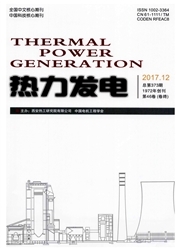

 中文摘要:
中文摘要:
在旋转的鼓的小粒的流动的数字模拟在媒介操作了到高率(Fr=0.1—0.2 ) 被执行了由用一个分子的动力学(MD ) 算法,那合并无弹性的粒子相互作用,滑动磨擦和滚动磨擦。Theresults 显示在旋转的鼓的小粒的流动的行为能被分类进二个不同地区:一 shear 在床表面和邻近墙的一个伪静电干扰塞子流动区域的活跃的层。在活跃的层的一个 tracer 粒子的滞留时间是近似一第三或在塞子流动区域的那的一半。活跃的层在的厚度中间弦是 about0.57—0.61 预定塞子流动区域的。在这个工作模仿的所有情况在串联转动的中间的政体而不是纯滚动政体,这被发现。模仿的正切的速度在中间弦也与在文学和好同意报导的试验性的结果相比被获得了。基于 MD 模拟和试验性的结果,一条连续统途径也被开发了。在塞子流动区域的 granulars olids 的行为与一个指数的函数很好描述的速度侧面从墙沿着光线的方向经历塑料变丑,这被显示出,而活跃的层速度为 Couette 跟随一个简单表达式砍流动。讨论也被成为了小粒的温度和集中介绍的在。
 英文摘要:
英文摘要:
Numerical simulations of granular flows in rotating drums operated at medium to high rates (Fr=0.1 - 0.2) have been carried out by using a Molecular Dynamics (MD) algorithm that incorporates inelastic particle interactions, sliding friction and rolling friction. The results indicate that the behavior of granular flow in rotating drums can be classified into two distinct zones: a shear active layer at the bed surface and a quasi-static plug flow region adjacent to the wall. The residence time of a tracer particle in the active layer is approximately a third or a half of that in the plug flow region. The thickness of the active layer at mid-chord is about 0.57-0.61 times that of the plug flow region. It is found that all cases simulated in this work are in the rolling-cascading intermediate regime instead of the pure roiling re- gime. The simulated tangential velocity at the mid-chord is also compared with experimental results reported in the literature and good agreement has been obtained. Based on the MD simulations and experimental results, a continuum approach has also been developed. It is shown that the behavior of granular solids in the plug flow region experiences plastic deformation along the radial direction from the wall with the velocity profiles well described by an exponential function, whereas the active layer velocity follows a simple expression for the Couette shear flow. Discussion has also been made on the granular temperature and concentration profiles.
 同期刊论文项目
同期刊论文项目
 同项目期刊论文
同项目期刊论文
 期刊信息
期刊信息
